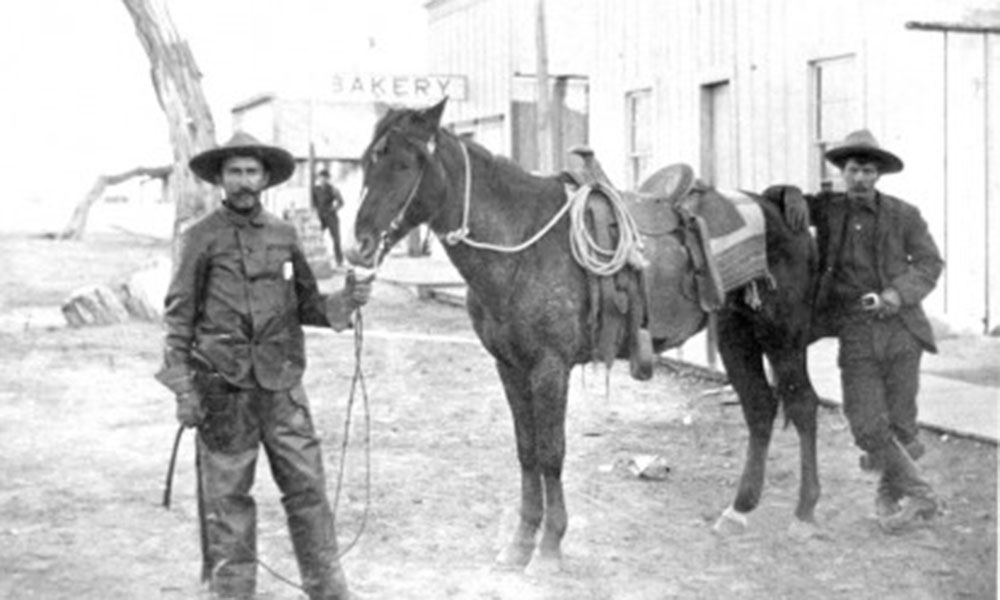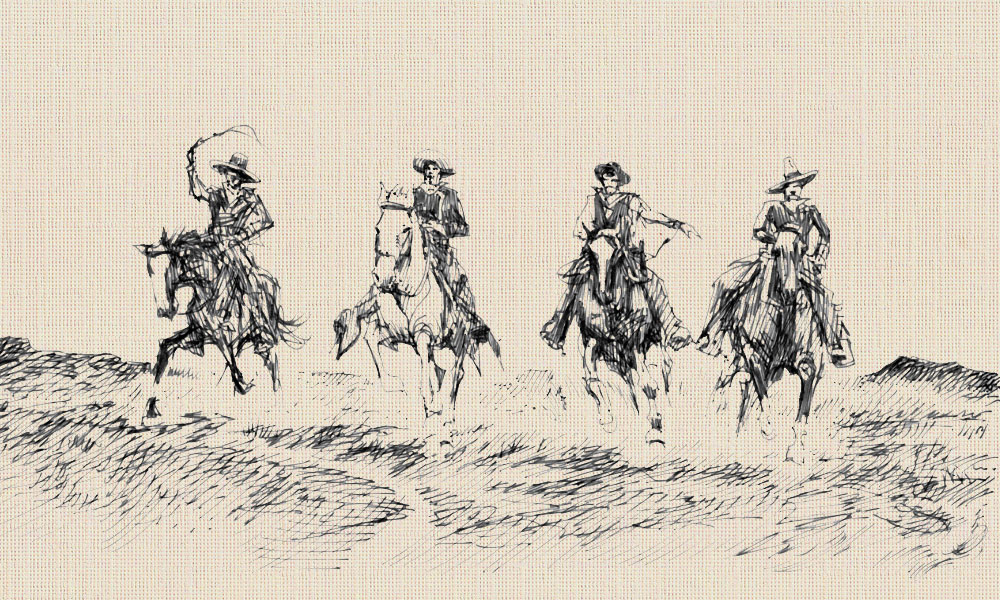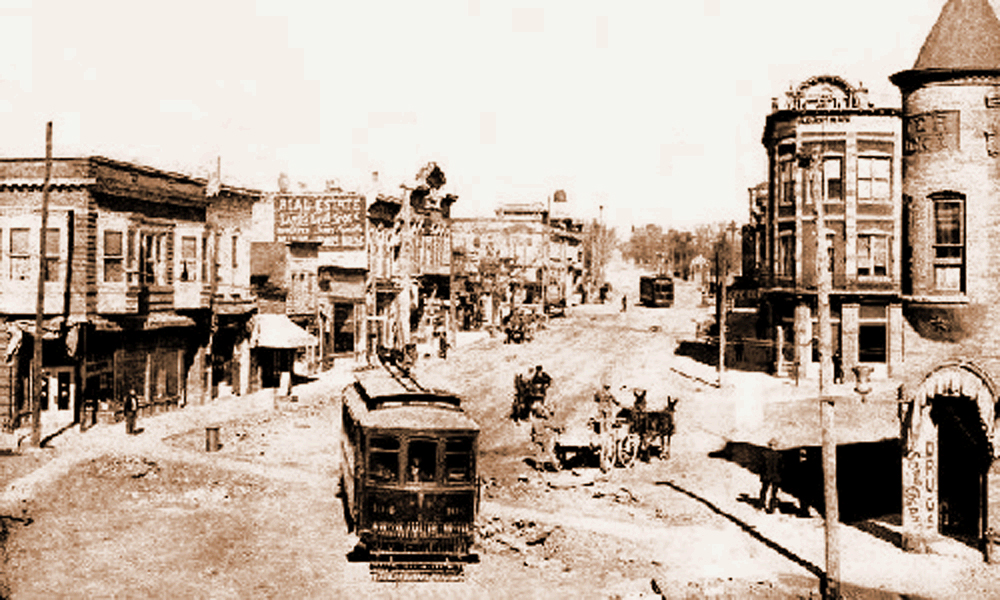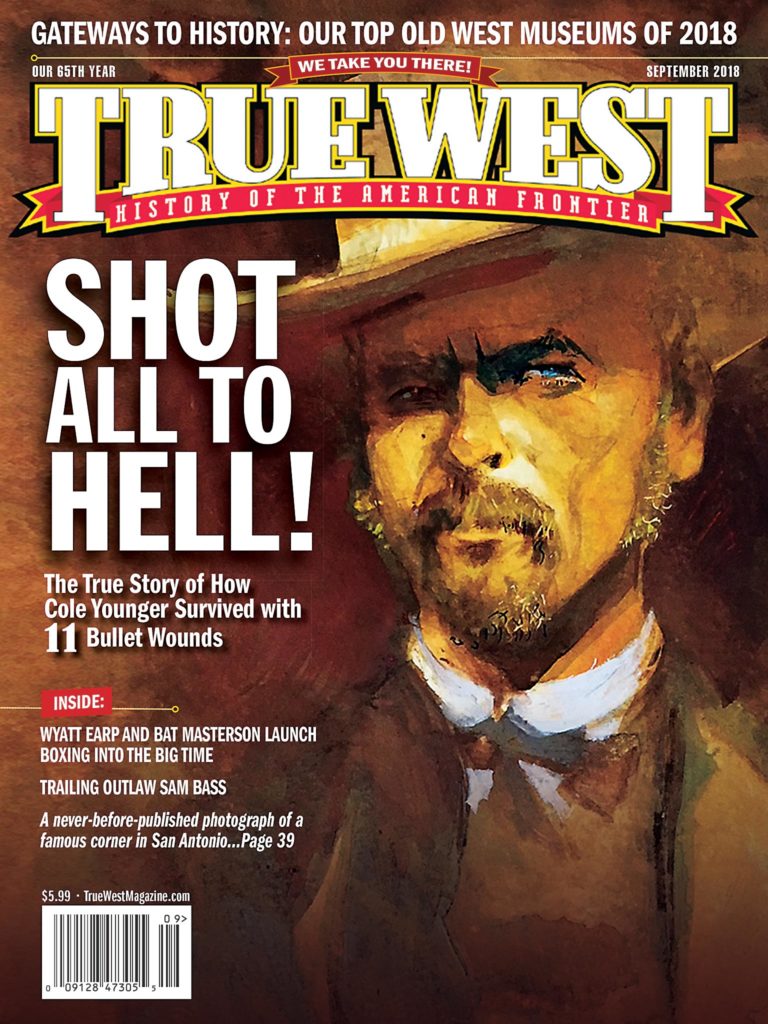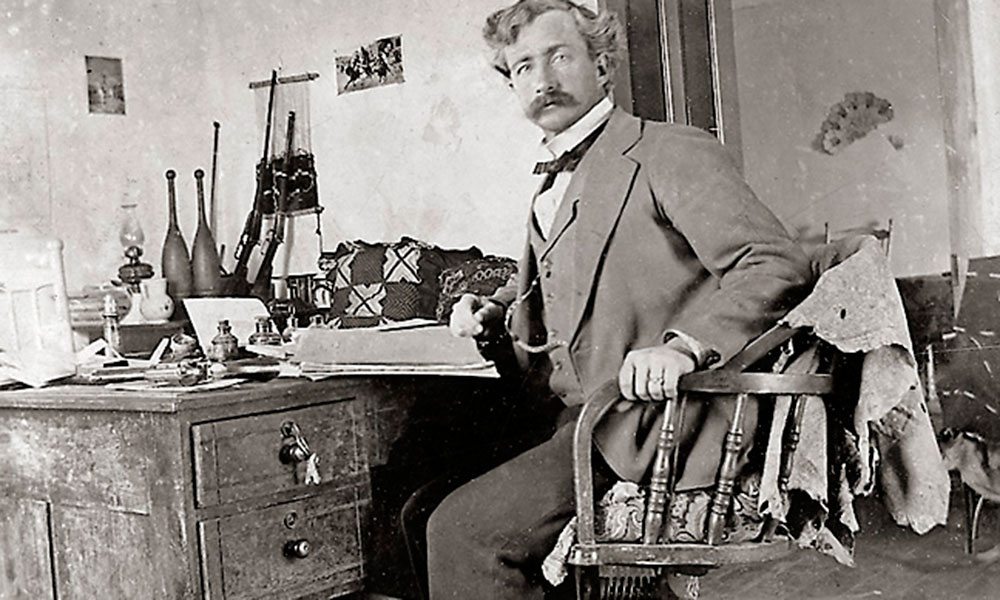
Mossman’s life reads like something out of a Louis L’Amour western. The son of a Civil War hero, he was a descendant of the Scots-Irish, that adventurous, hell-for-leather breed who carved out a niche of history on the American frontier a century earlier. He was of stocky build, broad-shoulders, standing 5’8″ and weighing 180 pounds. By the time he was fifteen, Mossman was drawing pay as a working cowboy in New Mexico.
As a young cowboy, Mossman earned a reputation as a quick-tempered, wild and restless youth who’d fight at the drop of a hat. He was also very dependable and honest, something that earned the respect of the ranchers for whom he worked. Once he walked 110 miles across a dry, burning desert to deliver an important letter for his boss. He walked the 47-hour journey because he thought it was too dry to take a horse.
By the time he was twenty-one, Mossman was foreman of a large ranch in New Mexico that ran 8,000 head of cattle. Six years later, he was managing a big outfit in the Bloody Basin in Arizona’s rugged central mountains. A few years later he was named superintendent for the troubled Aztec Land and Cattle Company, better-known as the Hash Knife Outfit. The Hash Knife was one of the biggest cow outfits in the entire West. It was also on the verge of bankruptcy when he was called in to try and keep it from going belly up.
It was while running the Hash Knife that Burt Mossman achieved his greatest fame up to that time. The eastern-owned outfit had been running as many as 60,000 head of beef over two million acres. Gangs of rustlers, both in the employ of the company and those who set up maverick factories on the fringe had been stealing the ranch blind. The outfit had been frustrated in its attempts to stop the rustling by locals who resented large, absentee ownership, and who, because of land grant advantages, were able to graze their cattle free on the public domain. Consequently, local juries were prone to find defendants not guilty. Also the rustlers were able to get a friend on the jury to disrupt things, causing a mistrial or hung jury. In fourteen years of trying, the Hash Knife hadn’t been able to get a single conviction.
Burt Mossman didn’t waste time settling into his new job. On his first day the scrappy cowman captured three rustlers and tweaked the nose of Winslow’s town bully. Then he fired 52 of the 84 cowboys on the Hash Knife payroll and installed trusted cowmen as wagon bosses. He visited local leaders in the community and convinced them to take a stand against cattle rustlers. Soon, he had the outfit turning a profit again.
But, Mossman couldn’t control the weather, the cowman’s greatest nemesis. A prolonged drought, followed by a calamitous blizzard, finished off the company in 1901.
With the completion of the Santa Fe line on the north and the Southern Pacific on the south, stage robbers turned to a new line of work. Between 1897 and 1900 there were six train robberies on the Southern Pacific alone. Bands of rustlers boldly stole cattle in broad daylight, driving small outfits out of business. Payrolls for the mines were being robbed on a regular basis.
Mossman didn’t have to wait long before he had another job, this time he was a lawman.
County sheriffs had no jurisdiction outside their districts. Once an outlaw crossed a county line he was home free. There was a large outcry from ranching and mining interests for a territorial police modeled after the famous Texas Rangers. By the turn of the century politicians were trying to impress upon the U.S. Congress the fact that Arizona was ready for statehood. Many in congress didn’t think the Arizonans should be admitted until they did something about the lawlessness.
In March, 1901, the territorial legislature passed a bill to raise a quasi-military company of rangers who could not only shoot straight and fast but could ride hard and long. They would need a leader who was tough enough to ride herd on such an outfit.
Burt Mossman was Territorial Governor Nathan Oakes Murphy’s choice to be the first captain of the Arizona Rangers.
https://truewestmagazine.com/cattle-cowboys-and-culture/

